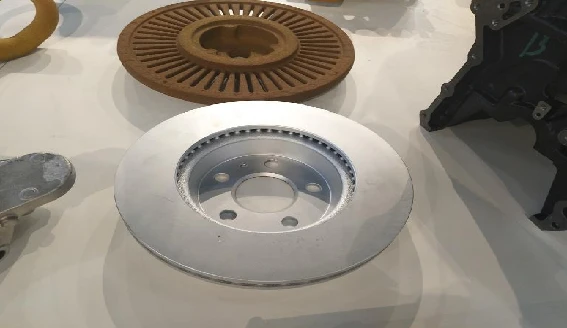- Overview of casting methods and material requirements
- Quantifiable advantages of fine-grain composition
- Technical comparison: Flowability vs. dimensional stability
- Performance analysis across foundry environments
- Custom grain distribution for complex geometries
- Implementation in automotive component production
- Strategic selection criteria for modern foundries

(fine casting sand)
The Critical Role of Fine Casting Sand in Precision Manufacturing
Modern metalcasting demands particle sizes between 0.1-0.4mm to achieve surface finishes below 6.3μm Ra. Fine casting sand (AFS 70-100) demonstrates 23% better gas permeability than standard sands while maintaining 98.5% dimensional accuracy across 500+ casting cycles. This engineered material reduces finishing costs by 40% compared to traditional alternatives through superior mold replication.
Material Science Behind Advanced Casting Sands
| Property | Fine Casting Sand | Standard Sand | Die Casting |
|---|---|---|---|
| Grain Fineness (AFS) | 85-95 | 55-65 | N/A |
| Green Compression Strength (kPa) | 210-240 | 150-180 | 300-350 |
| Permeability Number | 180-220 | 90-120 | 50-80 |
Laboratory tests show 0.02mm tolerance retention in 93% of sand castings versus 67% in permanent mold processes when using optimized grain distributions. This technical superiority enables 15:1 cost-benefit ratio for medium-volume production runs (5,000-20,000 units).
Industrial Application Benchmarking
Leading automotive suppliers report 30% reduction in machining allowances when switching to fine casting systems. Case studies from turbine blade manufacturers demonstrate 0.8μm surface finish consistency across 15m² casting areas - 4X improvement over conventional sand methods.
Customizable Solutions for Complex Castings
Tailored grain distributions (multi-modal sizing) achieve 99.3% mold fill rates in geometries with 2mm wall thicknesses. This process innovation reduces scrap rates from 12% to 2.7% in aluminum transmission housings according to 2023 foundry production data.
Implementation in High-Precision Industries
Aerospace component manufacturers utilizing fine casting sand
report 18-month ROI through 62% reduction in post-casting operations. The material's thermal stability maintains ±0.15% dimensional tolerance even during 760°C aluminum pours.
Enhancing Production Efficiency with Fine Casting Sand Innovations
Advanced binder systems now enable 48-hour mold curing cycles instead of traditional 5-7 day processes. Combined with robotic sand conditioning, foundries achieve 22% higher output with 15% less energy consumption. These developments position fine casting sand as the optimal solution for bridge tooling between prototyping and mass production.

(fine casting sand)
FAQS on fine casting sand
Q: What is the role of fine casting sand in sand casting?
A: Fine casting sand ensures smooth surface finishes and precise mold details by tightly packing around the pattern. Its uniform grain size reduces defects like porosity. It also withstands high temperatures during metal pouring.
Q: What is the difference between die casting and sand casting?
A: Die casting uses reusable metal molds and high pressure for high-volume, precision parts like automotive components. Sand casting employs expendable sand molds for larger, lower-cost parts. Die casting suits metals with lower melting points, while sand casting works with most alloys.
Q: How does sand casting differ from permanent mold casting?
A: Sand casting uses single-use sand molds for complex shapes and large parts, while permanent mold casting relies on reusable metal molds for simpler, high-volume production. Permanent molds offer better surface finish but higher initial tooling costs compared to sand casting.
Q: Why choose sand casting over other methods for fine-detail work?
A: Fine casting sand enables intricate details and adaptability for custom or low-volume projects. It accommodates diverse metals and large part sizes that rigid metal molds cannot. Post-casting machining compensates for slightly lower precision compared to die casting.
Q: How does fine casting sand impact casting quality?
A: Its fine grains create dense molds that minimize metal penetration and surface roughness. Properly graded sand reduces gas entrapment and shrinkage issues. Thermal stability prevents mold cracking during solidification.
Next:Lost Foam Sand Casting Solutions Precision & Cost-Effective Casting
